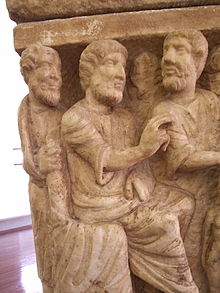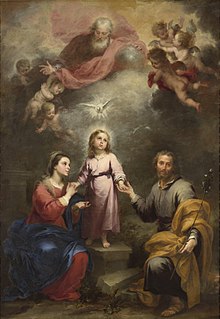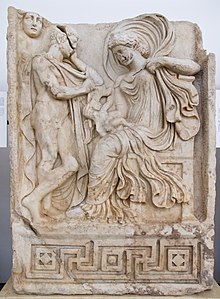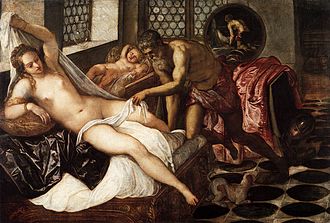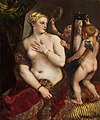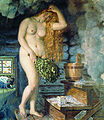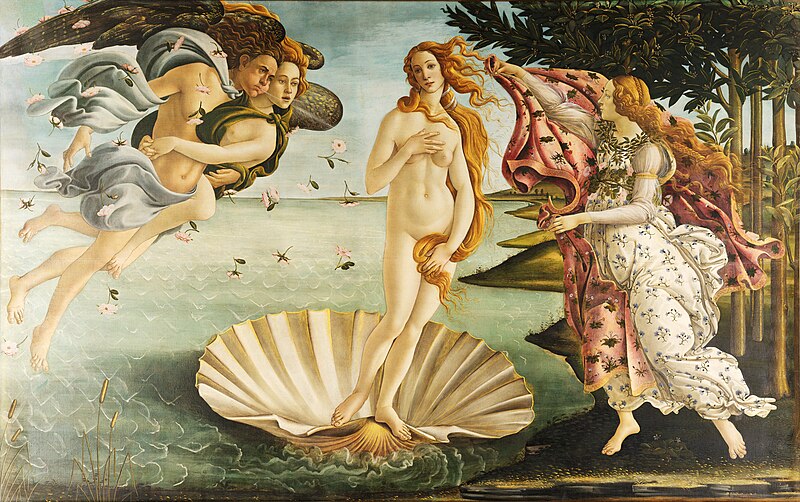Examples
There are many conceptions of programmable matter, and thus many discrete avenues of research using the name. Below are some specific examples of programmable matter.
"Simple"
These include materials that can change their properties based on some input, but do not have the ability to do complex computation by themselves.
Complex fluids
Main article: Complex fluids
The physical properties of several complex fluids can be modified by applying a current or voltage, as is the case with liquid crystals.
Metamaterials
Main article: Metamaterials
Metamaterials are artificial composites that can be controlled to react in ways that do not occur in nature. One example developed by David Smith and then by John Pendry and David Schuri is of a material that can have its index of refraction tuned so that it can have a different index of refraction at different points in the material. If tuned properly, this could result in an invisibility cloak.
A further example of programmable -mechanical- metamaterial is presented by Bergamini et al.[12] Here, a pass band within the phononic bandgap is introduced, by exploiting variable stiffness of piezoelectric elements linking aluminum stubs to the aluminum plate to create a phononic crystal as in the work of Wu et al.[13] The piezoelectric elements are shunted to ground over synthetic inductors. Around the resonance frequency of the LC circuit formed by the piezoelectric and the inductors, the piezoelectric elements exhibit near zero stiffness, thus effectively disconnecting the stubs from the plate. This is considered an example of programmable mechanical metamaterial.[12]
In 2021, Chen et al. demonstrated a mechanical metamaterial whose unit cells can each store a binary digit analogous to a bit inside a hard disk drive.[14] Similarly, these mechanical unit cells are programmed through the interaction between two electromagnetic coils in the Maxwell configuration, and an embedded magnetorheological elastomer. Different binary states are associated with different stress-strain response of the material.
Shape-changing molecules
An active area of research is in molecules that can change their shape, as well as other properties, in response to external stimuli. These molecules can be used individually or en masse to form new kinds of materials. For example, J Fraser Stoddart's group at UCLA has been developing molecules that can change their electrical properties.[10]
https://en.wikipedia.org/wiki/Programmable_matter
Shape-changing molecules
An active area of research is in molecules that can change their shape, as well as other properties, in response to external stimuli. These molecules can be used individually or en masse to form new kinds of materials. For example, J Fraser Stoddart's group at UCLA has been developing molecules that can change their electrical properties.[10]
Electropermanent magnets
Main article: Electropermanent magnet
An electropermanent magnet is a type of magnet which consists of both an electromagnet and a dual material permanent magnet, in which the magnetic field produced by the electromagnet is used to change the magnetization of the permanent magnet. The permanent magnet consists of magnetically hard and soft materials, of which only the soft material can have its magnetization changed. When the magnetically soft and hard materials have opposite magnetizations the magnet has no net field, and when they are aligned the magnet displays magnetic behaviour.[15]
They allow creating controllable permanent magnets where the magnetic effect can be maintained without requiring a continuous supply of electrical energy. For these reasons, electropermanent magnets are essential components of the research studies aiming to build programmable magnets that can give rise to self-building structures.[15][16]
Robotics-based approaches
Self-reconfiguring modular robotics
Main article: Self-reconfiguring modular robot
Self-reconfiguring modular robotics is a field of robotics in which a group of basic robot modules work together to dynamically form shapes and create behaviours suitable for many tasks, similar to programmable matter. SRCMR aims to offer significant improvement to many kinds of objects or systems by introducing many new possibilities. For example: 1. Most important is the incredible flexibility that comes from the ability to change the physical structure and behavior of a solution by changing the software that controls modules. 2. The ability to self-repair by automatically replacing a broken module will make SRCMR solution incredibly resilient. 3. Reducing the environmental footprint by reusing the same modules in many different solutions. Self-reconfiguring modular robotics enjoys a vibrant and active research community.[17]
Claytronics
Main article: Claytronics
Claytronics is an emerging field of engineering concerning reconfigurable nanoscale robots ('claytronic atoms', or catoms) designed to form much larger scale machines or mechanisms. The catoms will be sub-millimeter computers that will eventually have the ability to move around, communicate with other computers, change color, and electrostatically connect to other catoms to form different shapes.
Cellular automata
Main article: Cellular automata
Cellular automata are a useful concept to abstract some of the concepts of discrete units interacting to give a desired overall behavior.
Quantum wells
Main article: Quantum well
Quantum wells can hold one or more electrons. Those electrons behave like artificial atoms which, like real atoms, can form covalent bonds, but these are extremely weak. Because of their larger sizes, other properties are also widely different.
Synthetic biology
Main article: Synthetic biology

A ribosome is a biological machine that utilizes protein dynamics on nanoscales to synthesize proteins.
Synthetic biology is a field that aims to engineer cells with "novel biological functions."[citation needed] Such cells are usually used to create larger systems (e.g., biofilms) which can be "programmed" utilizing synthetic gene networks such as genetic toggle switches, to change their color, shape, etc. Such bioinspired approaches to materials production has been demonstrated, using self-assembling bacterial biofilm materials that can be programmed for specific functions, such as substrate adhesion, nanoparticle templating, and protein immobilization.[18]
See also
 Science portal
Science portalComputronium
Nanotechnology
Smart material
Smartdust
Ubiquitous computing
Universal Turing machine
Utility fog
https://en.wikipedia.org/wiki/Programmable_matter


